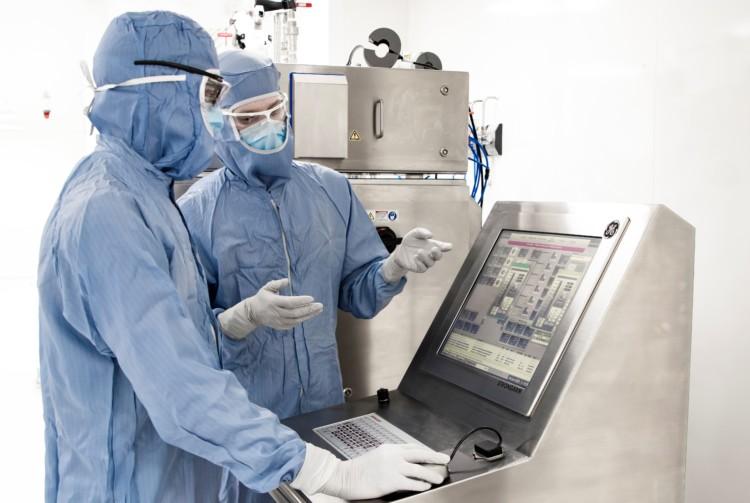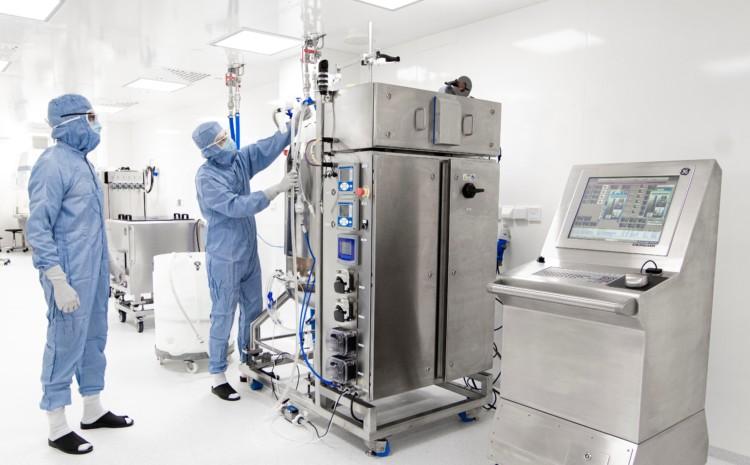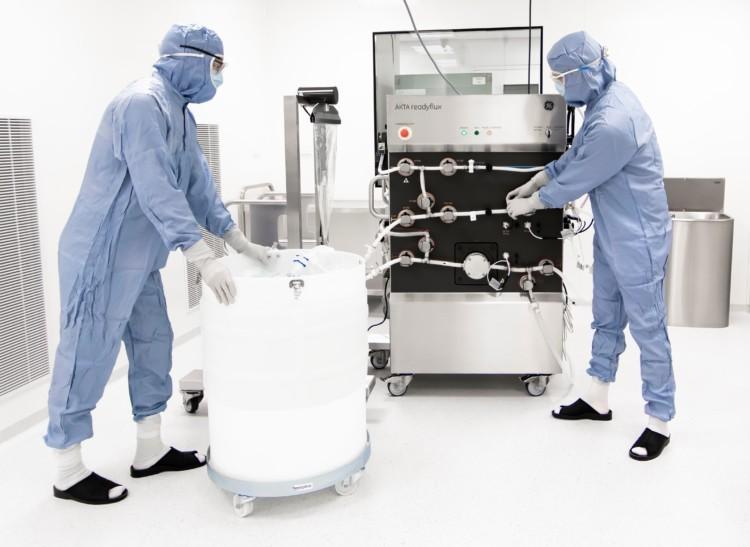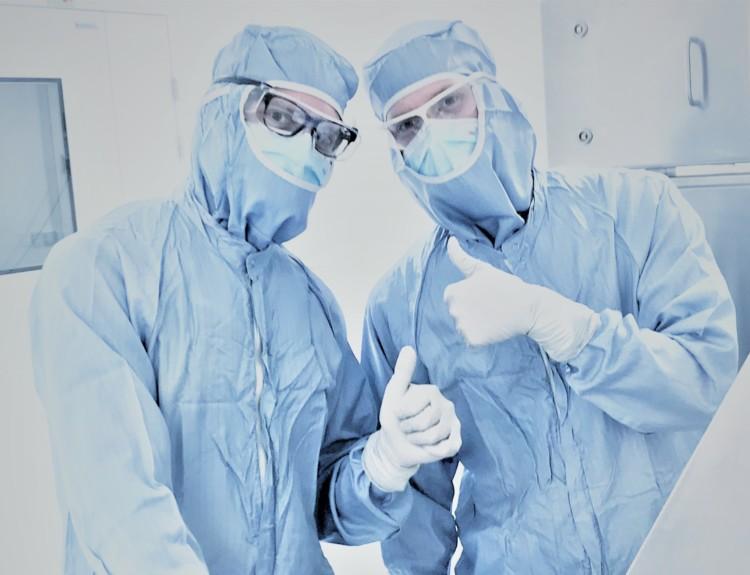4 Areas where a CDMO can help your Viral Vector project.

The therapeutic possibilities of cell and gene therapy are very appealing. The possibility to use a Viral Vector to carry the therapeutic gene into the target cells or to initiate cell transduction holds the potential to provide the needed cure for conditions that today lack effective treatment. Among these conditions are e.g. genetic diseases, certain types of eye diseases, and cancer. In 2019 FDA approved a Viral Vector-based gene therapy to treat a rare disease, spinal muscular atrophy, in children under the age of two [1]. Scientific development around other conditions is fast-paced and the list of clinical- trial-phase gene therapies has steadily grown. And this is only the beginning. With 900 investigational new drug applications in the pipeline for ongoing clinical studies, the FDA has announced its strong support for innovation in the development of gene therapy products [2] [3].
But innovation is not enough. The path from the laboratory bench to the clinic requires careful planning and capabilities and resources to cover the supply chain from gene to finished vial. As a drug developer, you need to take numerous far-reaching decisions. Although scientifically experienced, academic groups or biopharmaceutical companies may have gaps in their process engineering know-how. How can a CDMO help with the task? While there are many areas where a CDMO can assist in your Viral Vector project, here we highlight four key areas.
1. Access to Plasmid DNA
When Viral Vectors are manufactured, the appropriate cells must first be cultured and expanded and then transfected, typically using a plasmid DNA, i.e. a circular DNA produced in E. coli. Plasmids are the key building blocks in the manufacturing of Viral Vectors. As an example: Adeno-Associated Viral Vector production may require three types of plasmids that code for components for building functional AAVs. To make sure that the availability of quality plasmids will not slow down your Viral Vector project, it is beneficial to work with a One-Stop-Shop CDMO that can provide GMP-grade production of both Viral Vectors and plasmid DNA. A platform approach to plasmid DNA production, where plasmid constructs can efficiently be produced using readily defined processes, minimizes the time needed from project set-up up to Drug Substance or Drug Product delivery.
2. Capacity planning and up-scaling

The production of Viral Vectors needs to be planned at an early stage, and the process has to be scalable from the laboratory scale to the production scale in order to support clinical and commercial plans. Any changes in processes during the clinical trial phases are known to be time-consuming and expensive. A CDMO can design a production road map and thus help you in avoiding stumbling blocks.
Overall, upscaling should be a carefully designed and well-documented process. The factors that determine the production capacity are the size of the population that your Viral Vector product is targeted at and the dose. For systemic gene therapy, substantially larger volumes may be needed as compared to e.g. cell-based CAR-T therapy [4]. When the processes and instruments used in process development correspond to those used in production, up-scaling will be straightforward. At the Biovian Viral Vector manufacturing facility, high volumes can be reached e.g. through up-scaling the suspension cell culture from Xcellerex™ XDR-10 to XDR-200, i.e. from a 10-L to a 200-L single-use bioreactor. With adherent cell cultures the disposable fixed-bed bioreactors such as iCELLis® Nano can be scaled up to a similar bigger system.
Downstream processing of Viral Vectors has been a long-standing issue within the industry due to the poor scalability of ultracentrifugation. Our process development services (see more in chapter 3) help to move away from capacity-limited ultracentrifugation methods by replacing them with scalable chromatographic purification. At our manufacturing site, the laboratory-scale chromatographic purification will be scaled up to the fully automated Äkta Ready when moving into GMP production scale. Liquid chromatography is often combined with Tangential Flow Filtration. Here we have an automated ÄKTA™ readyflux single-use TFF system for GMP manufacturing. Production-planning expertise together with state-of-the art-instruments makes for a winning combination.

3. Process development
One entity, where the involvement of a CDMO can become a success-driving factor, is process development. Process development includes the selection, testing, and optimization of conditions and methods before the transition to a larger production scale. Our process development team provides the knowledge base and means for GMP production. Needless to say, the use of Design of Experiments (DoE) at an early stage is a fundamental element for the identification of your Critical Quality Attributes (CQAs), which in turn support a Quality by Design (QBD) approach to your process development and validation. For us, at Biovian it is no problem to start from a single vial with the viral construct or a small volume of plasmids. Building on this, our team of virologists, cell biologists, biotechnologists and process engineers will create a road map and an optimal process for your Viral Vector program. Since our people develop processes for numerous biopharmaceutical projects each year, we can give expert insight into what works best for your product-to-be. Well planned is half done, as the saying goes.

4. Analytics
The importance of precise analytics cannot be overemphasized. In fact, analysis for the demonstration of identity, purity and strength are part of the European regulatory requirements for clinical trials [5]. Overall, precise analytical methods are needed for raw material testing, in-process control and for the demonstration of the quality of the Viral Vector batch before it can be certified by a Qualified Person and shipped for clinical trial use or sale. With proper analytical methods, process understanding increases, and your Viral Vector product will be well characterized. When working with a CDMO, whose process analytics are integrated with process development, the program will be straightforward. As a premium One-Stop-Shop CDMO we can provide you with comprehensive analytical services during all Drug Substance and Drug Product development projects.
Summary
To summarize, an experienced Viral Vector CDMO can offer you valuable guidance when your project takes the critical steps from the laboratory bench to the clinic. Biovian, with far over a decade of experience in turning ideas into manufacturable products, can help you in making good technical decisions at the right time for the project. We provide a One-Stop-Shop concept for Viral Vector production which gives you access to GMP-grade plasmid DNA, process development know-how, production up-scaling and advanced analytics – plus many other services, not listed here. This way we can help to accelerate your clinical development project toward a commercial product. To make the most of a CDMO relationship, choose the one with a One-Stop-Shop concept.
- FDA, “FDA approves innovative gene therapy to treat pediatric patients with spinal muscular atrophy, a rare disease and leading genetic cause of infant mortality,” 24 May 2019. [Online]. Available: https://www.fda.gov/news-events/press-announcements/fda-approves-innovative-gene-therapy-treat-pediatric-patients-spinal-muscular-atrophy-rare-disease.
- J. Magowan, “New FDA guidelines for gene therapy products,” BioNews, 3 February 2020. [Online]. Available: https://www.bionews.org.uk/page_147567.
- “FDA Continues Strong Support of Innovation in Development of Gene Therapy Products,” 28 January 2020. [Online]. Available: https://www.fda.gov/news-events/press-announcements/fda-continues-strong-support-innovation-development-gene-therapy-products.
- Cytiva, “Viral vector production series: Scale up of viral vector production,” 11 February 2019. [Online]. Available: https://www.youtube.com/watch?v=23Vm6ZWpHI4.
- ICHG GLC, “Essential documents for the conduct of a clinical trial,” [Online]. Available: https://ichgcp.net/8-essential-documents-for-the-conduct-of-a-clinical-trial. [Accessed June 2020].


